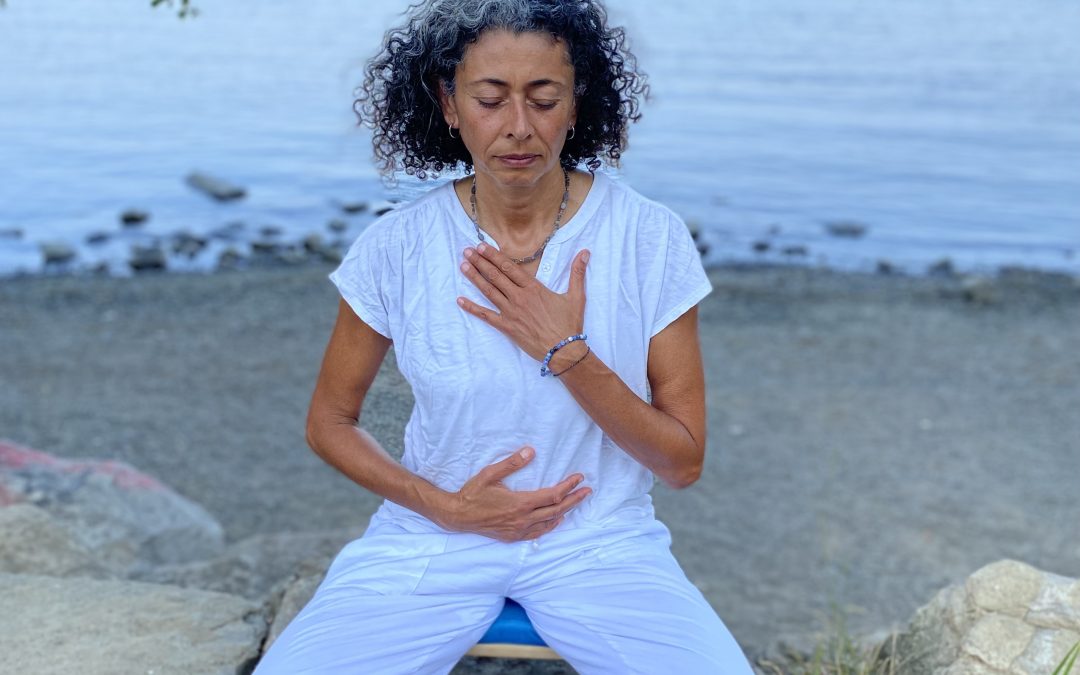If you’ve worked with me, you already know I return to one practice again and again: Pranayama /Breathwork. It’s my main sadhana, my greatest teacher, and the first tool I reach for—whether guiding someone through anxiety, helping an athlete recover, or navigating my own emotional storms.
Here’s what I’ve learned through years of practice and teaching: without proper breathing, there is no true healing.
Modern science is finally catching up to what yogis have known for millennia: conscious breathing (prāṇāyāma) is a master key to physical, mental, and emotional well-being. What was once described in ancient scriptures is now validated in neuroscience, respiratory physiology, and psychoneuroimmunology.
Below are thirteen research-backed ways breath transforms health and supports healing—from stress relief to immune function, emotional regulation to metabolic balance.
1. Breathwork for Stress Relief & Relaxation
Breath is the remote control for your nervous system. Slow, deep breathing stimulates the vagus nerve and activates the parasympathetic “rest-and-digest” response, lowering cortisol and blood pressure.
- Research: A meta-analysis showed slow breathing significantly reduces perceived stress and anxiety (Pascoe et al., 2017, Frontiers in Human Neuroscience).
- Practice: Nāḍī Śodhana (alternate nostril breathing) to balance and calm the mind.
2. Boosting Energy & Vitality Through the Breath
Dynamic practices like Kapalabhati (Skull-Shining Breath) and Bhastrika (Bellows Breath) oxygenate tissues, improve circulation, and enhance alertness—naturally lifting energy without caffeine.
- Research: Coherent breathing enhances vitality and resilience (Brown & Gerbarg, 2009, Journal of Alternative and Complementary Medicine).
3. Enhancing Athletic Performance & Recovery (VO₂ Max)
Breath training strengthens respiratory muscles and improves oxygen efficiency, enhancing endurance and post-exercise recovery.
- Research: Pranayama improves aerobic capacity and VO₂ max (Jayawardena et al., 2020, Sports Medicine – Open).
4. Strengthening the Diaphragm & Core Breathing Muscles
Your diaphragm is both a breathing and postural muscle—key to spinal support, digestion, and core stability.
- Research: Diaphragmatic breathing improves lung function and posture (Kang et al., 2016, Journal of Physical Therapy Science).
- Practice: Dīrgha Prāṇāyāma (three-part breath) retrains healthy patterns.
5. Emotional Healing (Anxiety, Grief, Trauma)
Breathwork soothes the amygdala (the brain’s fear center) and helps regulate intense emotional states.
- Research: Slow breathing reduces symptoms of anxiety and PTSD (Zaccaro et al., 2018, Frontiers in Psychology).
- Practice: Bhrāmari (humming bee breath) for emotional release and nervous system calm.
6. Improving Sleep Quality
Breath techniques prepare the body and mind for rest, lowering heart rate and quieting mental chatter.
- Research: Slow breathing improves sleep latency and quality (Tsai et al., 2015, Journal of Clinical Sleep Medicine).
- Practice: 4-6 breathing (inhale 4, exhale 6) or Chandra Bhedana before bed.
7. Breathwork for Menopause Support
Breath regulates vasomotor symptoms like hot flashes and helps stabilize mood swings.
- Research: Paced breathing (6 breaths/min) reduces menopausal discomfort (Carpenter et al., 2013, Menopause).
8. Deepening Mindfulness & Spiritual Practice
Prāṇāyāma prepares the mind for meditation by quieting mental fluctuations and heightening interoception.
- Scripture: Bhagavad Gītā 6.10–6.15 connects breath awareness to self-realization.
- Research: Breath meditation increases prefrontal cortex activity linked to mindfulness (Zeidan et al., 2010).
9. Coping with Trauma & Emotional Wounds
Trauma disrupts natural breathing patterns. Gentle, guided breathwork helps restore safety and widen the “window of tolerance.”
- Reference: van der Kolk’s The Body Keeps the Score highlights breath as a core trauma-healing tool.
10. Alleviating Chronic Pain & Tension
Breath interrupts the pain–tension cycle, reducing muscle guarding and altering pain perception.
- Research: Slow breathing lowers chronic pain intensity (Busch et al., 2012, Applied Psychophysiology and Biofeedback).
11. Enhancing Focus & Mental Clarity
Balanced breathing synchronizes the brain’s hemispheres and fosters cognitive sharpness.
- Research: Alternate nostril breathing improves attention and executive function (Telles et al., 2013, International Journal of Yoga).
12. Metabolic Support & Abdominal Fat Reduction
Breathwork reduces cortisol spikes linked to visceral fat and supports better glucose regulation.
- Research: Diaphragmatic breathing benefits metabolic health (Ma et al., 2017, Journal of Clinical Endocrinology & Metabolism).
13. Lymphatic & Immune Support — The Lung’s Hidden Role
Deep breathing activates the lymphatic system, aiding detox and immune resilience.
- Breakthrough: A 2017 Nature study discovered lungs play a key role in platelet production and house stem cells that replenish bone marrow (Lefrançais et al., 2017).
Final Thoughts: Your Breath is Your Power
From yogic texts to modern neuroscience, the message is clear: healing begins with the breath. Whether you seek stress relief, better sleep, or deeper spiritual connection, prāṇāyāma is a profound yet accessible path to wholeness.
“When the breath wanders, the mind is unsteady; but when the breath is calmed, the mind too will be still.” — Haṭha Yoga Pradīpikā 2.2
Start with three conscious breaths right now. Notice how you feel. That subtle shift is the doorway to healing.
Ready to Explore Breathwork with Guidance?
I’m hosting upcoming Breathwork Circles designed for:
- New Practitioners — Learn the foundations of safe, effective pranayama for stress relief, energy, and calm.
- Long-Time Practitioners — Deepen your practice, refine technique, and explore advanced states of awareness.
These circles are intimate, guided, and rooted in both ancient yogic wisdom and modern science — a space to reconnect with your body, mind, and inner stillness.
Reach out here to join the next circle


